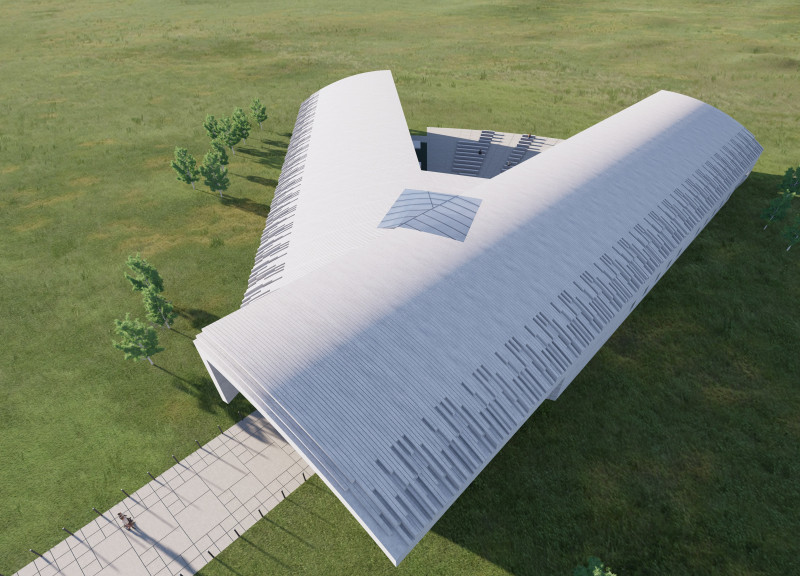5 key facts about this project
The Iceland Volcano Museum is an architectural project located in a landscape characterized by volcanic formations. Designed to educate visitors about Iceland’s unique geological features, specifically its volcanic activity, the structure also serves to connect visitors to the surrounding environment. The architectural design aims to integrate the building into its natural context, creating a dialogue between the interior spaces and the external geological landscape.
The museum features a spacious entrance lobby that acts as a transparent interface between the indoor exhibition spaces and the outdoors, facilitating movement and accessibility. It includes exhibition halls that are adaptable for various displays, emphasizing the educational mission of the museum. Natural light is a key feature, with large windows showcasing views of the Hverfjall Volcano and inviting the landscape into the experience.
Unique Design Approaches
One of the defining characteristics of this project is its commitment to sustainability. The architectural design incorporates green building practices, such as efficient HVAC systems, insulation, and the strategic use of natural lighting. The materials selected, including concrete, glass, and steel, are chosen for their performance in Iceland’s harsh climate, ensuring the structure remains durable and energy-efficient.
The conical roof structure mirrors the forms of volcanic features, integrating the building aesthetically and contextually into the volcanic landscape. This architectural approach not only enhances the visual appeal but also reinforces the museum’s theme of geological exploration. The design facilitates interaction with the environment, encouraging visitors to engage with the landscape through viewing platforms and outdoor spaces.
Functional Aspects and Visitor Engagement
The museum's layout strategically establishes zones for educational exhibits, interactive displays, and viewing galleries. These spaces are designed to maximize visitor engagement and understanding of volcanic activity. Interactive installations provide hands-on learning experiences, while viewing areas are optimized for observing geological phenomena.
Landscaping surrounding the museum utilizes native vegetation, further connecting the structure to its environment. The design is considerate of ecological impacts and promotes sustainable practices, which aligns with the museum's educational goals.
For a deeper understanding of the architectural ideas and design elements, it is recommended to explore the architectural plans and sections that outline the functional aspects and spatial arrangements of the Iceland Volcano Museum. The project offers valuable insights into contemporary architectural practices while addressing environmental and educational needs.





















































